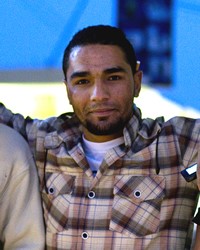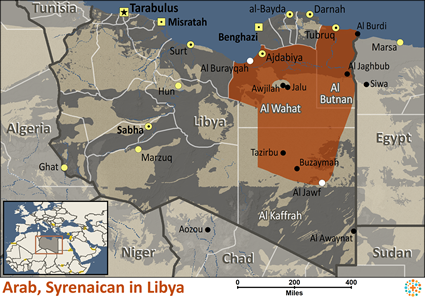The Cyrenaican Arabs live in the eastern coastal region of Libya. Simon of Cyrene, who helped Jesus carry the cross, was from this area. Cyrenaica was conquered by the Islamic Arabs and became known as Barka. Later it was annexed to Egypt before being taken by the Ottoman Empire. It was then ceded to Italy and eventually became an independent territory.
Cyrenaican Arabs are in a state of conflict with Arabs from Western Libya. This situation is harming the economy and allowing for ongoing conflict.
Cyrenaican Arabs are all Sunni Muslims who believe that the supreme God, Allah, spoke through his prophet, Mohammed, and taught mankind how to live a righteous life through the Koran and the Hadith. To live a righteous life, you must utter the Shahada (a statement of faith), pray five times a day facing Mecca, fast from sunup to sundown during the month of Ramadan, give alms to the poor, and make a pilgrimage to Mecca if you have the means. Muslims are prohibited from drinking alcohol, eating pork, gambling, stealing, slandering and making idols. They gather for corporate prayer on Friday afternoons at a mosque, their place of worship.
The two main holidays for Sunni Muslims are Eid al Fitr, the breaking of the monthly fast and Eid al Adha, the celebration of Abraham's willingness to sacrifice his son to Allah.
Sunni religious practices are staid and simple. They believe that Allah has pre-determined our fates; they minimize free will.
In most of the Muslim world, people depend on the spirit world for their daily needs since they regard Allah as too distant. Allah may determine their eternal salvation, but the spirits determine how well we live in our daily lives. For that reason, they must appease the spirits. They often use charms and amulets to help them with spiritual forces.
Cyrenaican Arabs need peace. Libya is destroying itself economically through an ongoing conflict.
Pray that God would allow the gospel to be proclaimed among the Cyrenaican Arabs.
Ask God to send workers out into His harvest field.
Pray that many believers around the world would intercede for these people.
Scripture Prayers for the Arab, Cyrenaican in Libya.
| Profile Source: Joshua Project |
| Other PDF Profile |

























